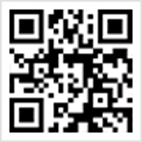China's GB4343, GB4824, GB9254 and GB17743 (corresponding to household appliances and power tools, engineering medical radio frequency equipment, information technology equipment, electrical lighting equipment) and other product family standards have mentioned to do electromagnetic harassment emission measurement. Although these standards belong to different products, the test items and test methods of conduction and radiation harassment described in it are common.
This paper mainly introduces the measuring method of the disturbance voltage on the power line of the equipment, and the main technical indexes of the corresponding measuring instruments. The appendix at the end of the paper also lists a set of test system for measuring the power line conduction disturbance voltage promoted by Shanghai Sanji Electronic Industry Co., LTD., because the system has a reasonable performance-to-price ratio, this system is especially suitable for enterprise-level users to carry out this test.
1. Measurement method of conduction disturbance voltage on power line
This paper describes the measurement method of the conducted disturbance voltage of electrical and electronic equipment on the power line (the frequency range of measurement is 0.15 to 30MHz).
1.1 Test layout
The test was conducted in a shielded room.
The requirements for the test layout are as follows:
The grounding plate must be a metal plate with a thickness of more than 0.5mm and an area of 2000 x 2000mm2. The ground plate should be connected to the earth, or a thin copper strip with an aspect ratio less than 5:1 and a thickness of 0.5mm is connected to the earth through the shielding chamber.
Be at least 800mm away from the screen room wall.
The distance between the test and the artificial power network is 800mm. There should be a good high-frequency connection between the artificial power supply network and the reference grounding plate.
For the ungrounded test product, it should be placed on the non-metallic support with a height of 400mm on the ground plate. The power cord of the test product is connected to the artificial power supply network with a wire not exceeding 1000mm in length. When the length of the power cord exceeds 800mm, the extra long part should be folded into a 300 ~ 400mm wire harness, while the distance between the test and the artificial power network remains unchanged at 800mm.
For ground test objects, the ground wire shall be connected to the ground point of the artificial power network with a wire of no more than 1000mm in length. The power cord of the test product is connected to the artificial power supply network by a wire with a length not exceeding 1000mm. The power cord is laid parallel to the ground wire, and the spacing is not more than 100mm. When the length of the power cord exceeds 800mm, the extra long part folds into a 300 ~ 400mm wire harness, while the distance between the test and the artificial power network remains unchanged at 800mm. In addition, the reference grounding plate is at least 0.5m larger than the edge of the test item.
The measurement receiver and artificial power network used in the test are introduced in the following sections to meet the needs of readers in understanding the test layout.
1.2 Measurement Receiver
The measuring receiver is actually a special measuring receiver. Since the measurement object is a weak continuous wave signal and a strong amplitude pulse signal, it requires the measurement receiver itself to have minimal noise, high sensitivity, large dynamic range of the detector, low input impedance (50Ω), and strong overload capacity of the front circuit. The detector should have a variety of detection functions (in order to adapt to different measurement needs, there are peak, quasi-peak, average and effective value detection functions). The measuring accuracy of the whole measuring band can meet the requirement of ±2dB. The frequency range of the measuring receiver should match the frequency of the test.


